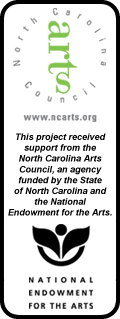|
|
The Pedestal Magazine -Interview with Hannah Tinti
|
Interview with Hannah Tinti |
|
|
Hannah Tinti grew up in Salem, Massachusetts. Her work has appeared in Story, Alaska Quarterly Review, Index, Epoch, Sonora Review, Story Quarterly, Another Magazine and Best American Mystery Stories 2003. Her short story colection, Animal Crackers, was recently released by Delta. She is currently the editor of One Story.
(Photo courtesy of Debbie Zeolla)
Interviewer: Nathan Leslie
NL: First of all, thank you for taking the time to talk to me, Hannah. It’s a real thrill for me to chat with you. I was really impressed by the stories in Animal Crackers. What was the genesis of this collection?
HT: Someone pointed out that there were a lot of animals in my stories, and after that I started writing stories towards that theme. So about half were written animal-consciously, and the rest weren’t.
NL: The animal motif that runs throughout the collection is compelling for many reasons. I'm sure folks have asked you about your own experience with animals, but I'll ask anyway. As a writer why do you think you are drawn to animals?
HT: I’m interested in animals because they don’t struggle with their nature, the way that humans do. Ultimately, the collection is about that human struggle, particularly with violence. But also with loneliness.
NL: Particular stories within Animal Crackers have a powerful resonance for me—particularly the title story, "Reasonable Terms," and "How to Revitalize the Snake in Your Life." Which story in the collection did you write first? Did one story help spark other stories in the collection?
HT: “Reasonable Terms" came first. I wrote it some time ago. In the original plot, the benefactors hired a hit man to kill the giraffes in the end, and the hit man had a change of heart and killed the benefactors instead. Then a magazine was interested in publishing the story, but thought it needed a new ending. So I cut the hit man. I was sorry to see him go. He was my favorite character, so I gave him his own story, “Hit Man of the Year." “How to Revitalize the Snake in Your Life" was originally a second person short-short that I was going to cut from the collection, but my editor, Susan Kamil at Dial, was intrigued by it and thought I should try and expand it. So I came at it from a new angle, changing the point of view and adding Mr. Green. It was actually one of the last stories I completed for the book.
NL: Can you tell me which of the stories (if any) in this collection were "difficult births" for you? Also, did any of the stories flow onto the page with relative ease?
HT: I would have to say that they were all difficult births. Even if a first draft was relatively easy, the subsequent editing and re-editing were killers. If I had to rank them, I would have to make “Talk Turkey" the hardest—I rewrote that one the most and am still not sure I captured what I wanted. “Slim’s Last Ride" probably changed the least from first to last draft.
NL: The language in the collection is exquisite—one might even call it poetic. Have you ever practiced your hand at poetry?
HT: I wrote one poem once, about Pinocchio, called “How to Build a Fire Big Enough to Make a Whale Sneeze." But it wasn’t very good. I guess I need more space on the page.
NL: Many reviews mention the eccentricity and the darkness of the stories within Animal Crackers. How do you feel about these kinds of remarks?
HT: There’s no way around it. These stories are dark. And I suppose a little eccentric. But I hope that readers will also see that in each there is also hope and love, even in the grimmest places.
NL: Some might note a certain subtle animal rights tinge to some of the stories in Animal Crackers. What do you make of these kinds of comments?
HT: I am a firm believer in animal rights, so I don’t mind the tinge at all.
NL: Were you surprised Animal Crackers received so much attention and has been reviewed so widely?
HT: I’m so grateful for the attention it received. It’s difficult for short story collections to get reviewed these days. But I’m not that surprised it got coverage, because the book is a little different.
NL: This is an industry question, I suppose, but it's something I've been mulling over recently. Do you think thematic short story collections have an advantage over traditional story collections in the literary marketplace or otherwise? Are linked story collections the future of short story collections?
HT: The fact is that it makes a book easier to “sell." Marketing and publicity people have to talk your collection up to booksellers and to magazines and newspapers. And if the collection has a theme it gives them an easier way of describing the book as a whole and giving it a hook. If a writer is more established and already has an audience, there isn’t a need to do this, but when you’re trying to sell an unknown writer, you need all the help you can get. So publishers love “themed" or “linked" collections. But I also think there is a bit of a backlash starting with reviewers, because so many people are doing it.
NL: I’d like to know about your experience at the NYU MFA program. Was it a beneficial experience for you? Did any of the stories in Animal Crackers evolve from the work you did at NYU?
HT: MFA programs are not for everyone, but NYU was a great experience for me. I studied with excellent writers—Paula Marshall, Dani Shapiro, A.M. Homes and E.L. Doctorow. I also made strong friendships that have stayed with me since I graduated. “Slim’s Last Ride" and “Reasonable Terms" both came from first drafts written at NYU.
NL: Hannah, are there particular contemporary writers you admire or consider influential?
HT: There are too many to count. I’m always finding new writers to admire.
NL: Can you tell me how you got involved with One Story?
HT: Maribeth Batcha, the publisher of One Story, came to me with the idea of publishing one short story at a time. Together we founded the magazine in 2001, and put out our first issue in April 2002. It’s done very well, and our subscription base keeps growing. I think that it has definitely filled a need.
NL: Is it sometimes difficult for you to select just one story for each issue?
HT: Not at all. What is difficult is finding the time to read all of the submissions we get. Everyone, including myself, works at One Story as a volunteer, and we have to do all the work around our paying jobs. But once you read a “One Story" story, you just know, immediately. And it’s very thrilling.
NL: I'm not asking you to pick favorites, but among the stories you’ve published in One Story, is there a certain story (issue) that you feel is particularly strong?
HT: I can’t pick just one. It’s like choosing between children. If people would like to get a taste of what we publish, they can pick up the 2006 O. Henry Awards. Two of the stories are ours: “Conceived" by David Lawrence Morse and “Letters in the Snow" by Melanie Rae Thon.
NL: Do you ever find your editorial work with One Story influencing your own writing?
HT: It’s made me a lot harder on myself, editorially.
NL: Do you like readings? Do you enjoy reading your work to audiences?
HT: I do like readings. One Story hosts a monthly series at Piano’s, which is a club on the Lower East Side. And I do enjoy reading my own work, particularly if the audience is an open and receptive one.
NL: What is the next project for you, Hannah?
HT: I’m currently finishing a fictional/historical novel about grave robbers, set in New England.
|
|
 |
|
|
The
Pedestal Magazine Copyright 2003
Designed By:
WEBPRO.COM
|
|



